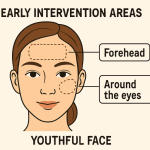With constant alerts, infinite tabs and cacophonous feeds, digital overwhelm is a very real phenomenon. Through small, mindful adjustments, consumers can create a calmer, more centered online experience.
Digital realms are distracting; blinking banners, unwanted pop-ups, attention-calling content. Though the internet bonds us together, it can be a cause of anxiety too. But there are easy means of structuring your digital world so it works for you. Not against you.
How Ad Blockers Can Decrease Mental Clutter
Web advertising is more than a nuisance. It’s mental noise. Although advertising plays a role for content creators and service providers, it can divert your attention and cause screen fatigue. That’s where products such as ad blockers step in. Using a pop up blocker for Chrome is one of the easiest ways to streamline your browsing experience. These tools filter out intrusive advertisements and pop-ups. They help reduce mental load. Users often find that with fewer visual interruptions, they can better concentrate on the task at hand. Importantly, ad blockers don’t just clean up websites; they help you reclaim mental bandwidth.
However, these tools need to be used responsibly. Some sites depend on advertising revenue to remain operational. Most blockers provide an option for whitelisting select sites. This balances out a better browsing experience by supplying content you like.
Screen Time Limits That Really Work
We’ve all done it—hopping on for a speedy check-in, then glancing up an hour later. Where did the time go? Screen mindlessness is a prevalent trap. Without boundaries, it’s no wonder you can easily waste hours staring at a screen. Imposing mindful screen time limits can significantly boost your online wellbeing.
Most smartphone devices and computer systems now have built-in digital wellbeing features. They empower users with tracking app activity, setting a daily limit for time used on apps and setting a block of device-free hours. Used regularly, they establish healthy boundaries that diminish digital fatigue.
It’s not a matter of banning screens at all. It’s a matter of being mindful of your behavior. Disabling unnecessary push notifications and reducing pre-sleep use of high-stimulus apps can also improve sleep quality and mood. A mindful relationship with devices begins with an understanding of when and in what ways you use them.
How Decluttering Can Improve Social Experience
Their aim is user engagement. They present trending issues. They suggest viral material and promoted posts. But everything in excess isn’t better still. Continuous viewing of non-applicable or emotional material can lead to burnout in the digital sense.
That’s why curating your feed is a powerful act of online selfcare. Start with an unfollow of anyone whose posts no longer contribute to your sense of value or interests. Then privilege posts which teach you, inspire you, or empower you. Most sites also offer keyword filtering or muted lists which can be applied for diminishing your contact with unwanted subjects.
Remember, social media should serve you. Not the other way around. By taking control of what you see, you reduce noise and make space for clarity. And when your feed reflects your personal goals and values, it becomes a tool for growth rather than a source of stress.
Incorporating Breaks to Boost Mental Clarity
Rest appears like an antithesis in a culture where busyness is a badge of honor. But short stops throughout your digitized day can actually have a significant effect on your level of focus and mental acuity. Science consistently shows mental rest boosts creativity, memory and decision-making.
A very efficient technique is the Pomodoro Technique: 25 minutes of work concentration with a 5-minute break. You can easily apply this scheme with browser extensions or with a productivity timer. At these very short breaks, don’t rush onto another screen. Get up instead. Stretch, take a sip of water, or get out for a breath of fresh air.
Creating an Organized and Centered Online Workspace
Just as a disorganized desk can drain your attention, a disorganized online setting can blur your thinking. Numerous open tabs, files and widgets cause visual congestion. That mentally and technically slows you down. Happily, setting your online workspace in order can bring serenity and boost productivity.
Start with your browser. Catalog important websites with folders and bookmarks. Close tabs you’re not using at the moment. Virtual desktops should be equally tidy. Tab organizers and minimalist launchers can reduce clogging even further.
Then consider your alert settings. Choose which alerts you absolutely need and disable the others. Background pings lead to divided attention and anxiety. You reduce the need for multiply-tasking through tweaking your alerts. This leaves space for deeper interaction.
A Note on Increased Digital Awareness
Beyond personal habits, there is a growing global awareness around creating healthier online ecosystems. Developers are building more user-focused tools. Users are increasingly seeking out privacy-oriented browsers, secure communication apps and minimalist designs that promote clarity.
Even in the fast-evolving world of cryptocurrencies, new projects’ priorities are user experience and protection of data. Rather than smooth sleight-of-hand or hype about speculation, most blockchain-based platforms are now concentrating on the way humans interact with their offerings. It’s about simplifying complex systems into intuitive ones. Transparent ones. Empowering ones.
Summarizing Online Mindfulness
A mindful online world isn’t about going offline. It’s about taking charge; diminishing distractions, filtering out noise and designing online spaces where you can think, breathe and be present. They amount to a calmer, more centered you in the world at large and online.






